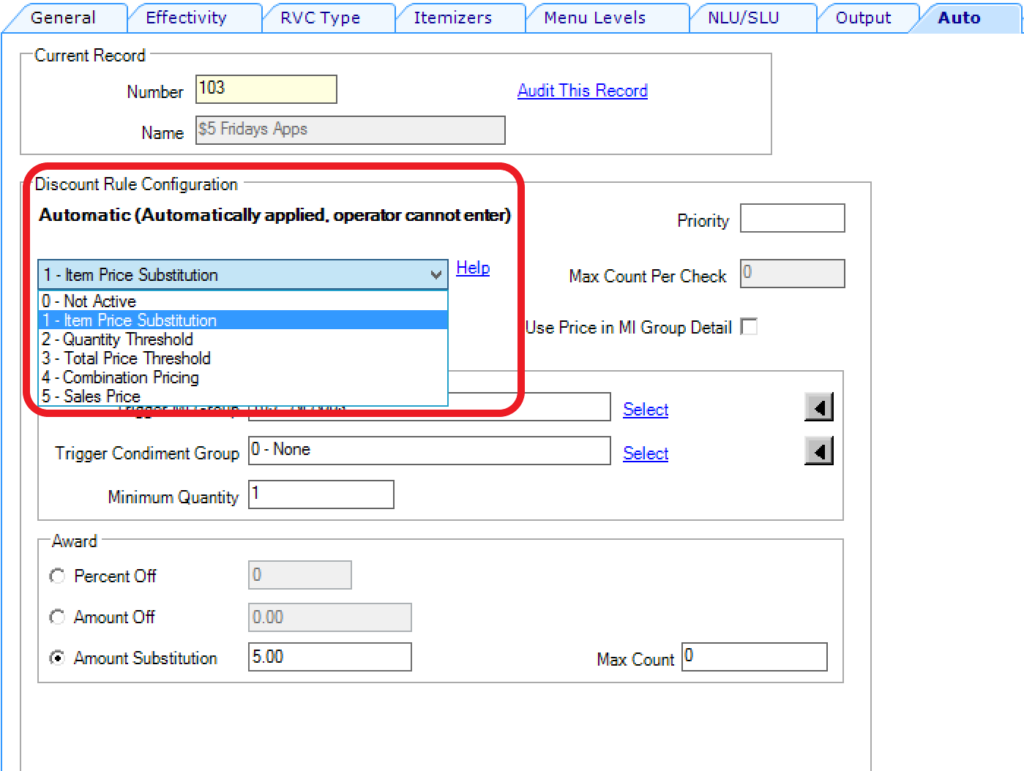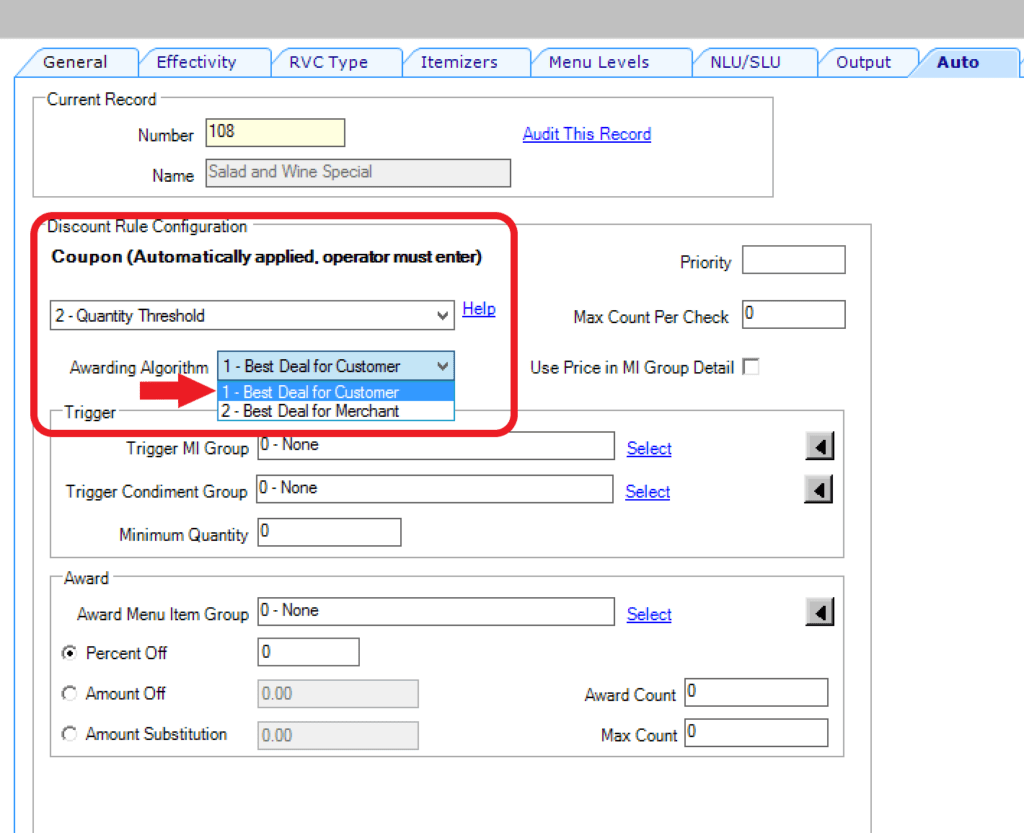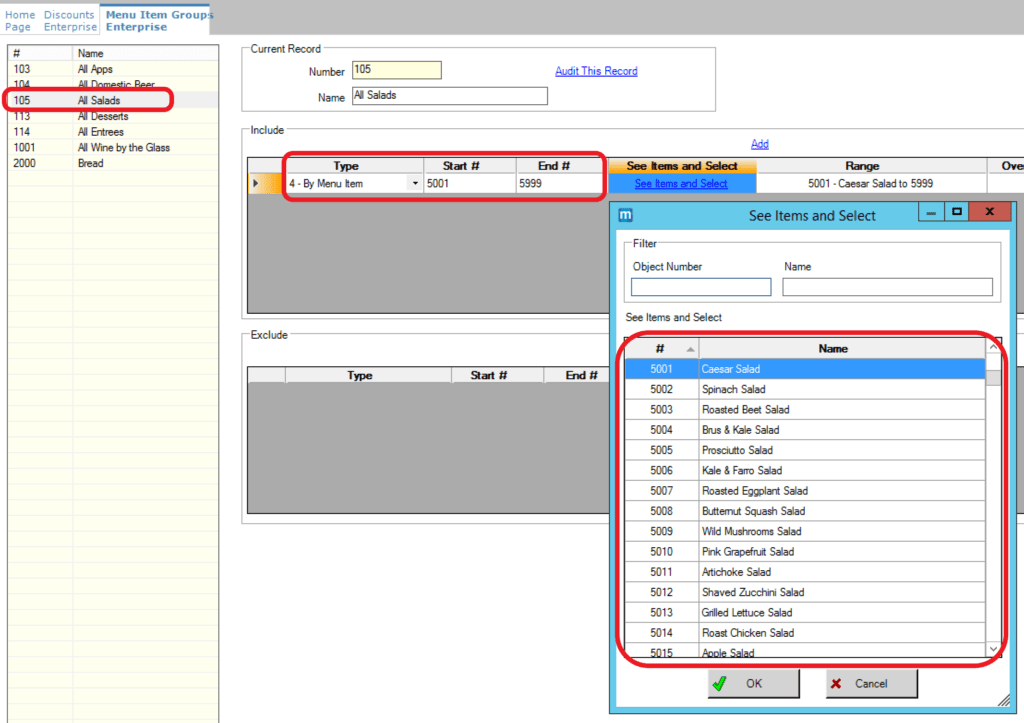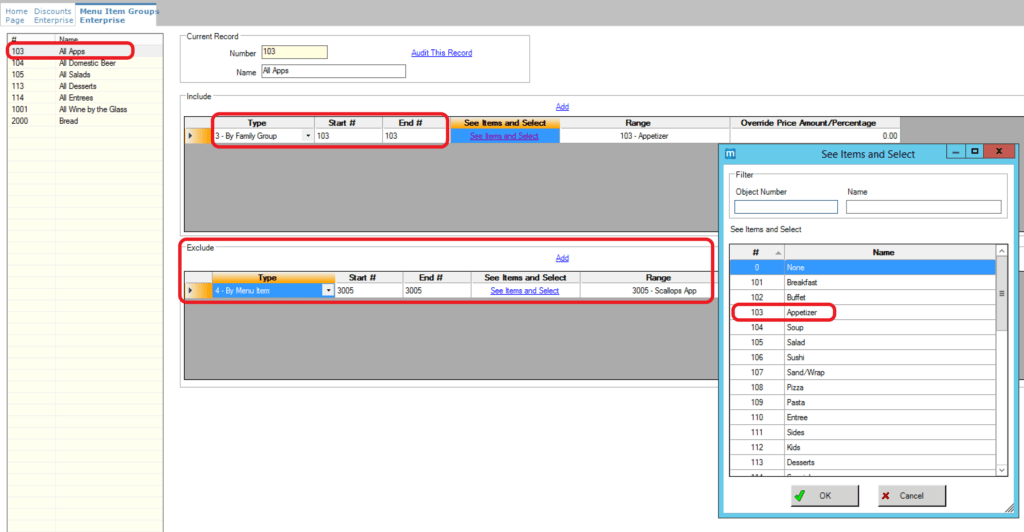What are Automatic Discounts and Promos, and how do we program them?
Discounts in Micros Simphopny are a reduction from the usual price of menu items, typically given to some customers as a form of loyalty, campaign, or promotion.
In this article, I will focus on Automatic Discounts and Promos with lots of examples, so let’s get started.
Before we dive in, I want to warn you: Micros Simphony (1) was designed to be used in a large spectrum of establishments, from small coffee shops to fast food restaurants, cruise ships, and casinos. That means we can program a huge variety of discounts, which is great. But it also means it’s very complex and not very user-friendly to program.
If you are looking for comprehensive Simphony Training, we have a complete online course and support platform. You will learn how to properly program discounts and everything else needed to run your Restaurant properly.
How to configure Automatic Discounts
The bulk of programming of Automatic Discounts and Coupons is done in the Auto tab, so we are going to focus on that. If you need a refresher on all the other options available for discounts, check out Discounts in Micros Simphony.
Automatic Discounts and Coupons are programmed exactly the same, the only difference between them is that automatic discounts apply to everyone without any intervention from the server, and the coupon requires the server to push a button in order to initiate the discount.
As an example:
- We will use an automatic discount for promotions available to everyone: “$5 Beers on Tuesdays.”
- We will use a coupon when the promotion is only available to select customers who received a physical coupon, like our Facebook page, or give us a review on Google: “Like our Facebook page and receive 10% off your food.”
When programming automatic discounts, first, we have to choose one of the five available discount algorithms, known as discount rules.

Using these five Rule Configurations, we can program pretty much any style of automatic discount or coupon so let’s take a look at what they do.
| Automatic Discount Rule | Description |
|---|---|
Item Price Substitution | This discount rule is used in scenarios such as:
We can trigger the discount using a menu item group or condiment group and the minimum quantity field. Once the 2 conditions are met, we can award a percent off, amount off or substitute the price. There is also a max count field if we need to limit the discount to 3 item maximum allowed for example. |
Quantity Threshold | Use a Quantity Threshold discount when the number of items added triggers a discount, and the awarded items are different than the trigger items. The discount is applied when the Minimum Quantity has been satisfied. For example, to configure a scenario where every three entrees purchased awards a free dessert set the Minimum Quantity value to 3, the Trigger Menu Item Group as the Entrees Family group, the Award Menu Item as the Desert Family group, and the Award Count to 1. This discount can also be used for Buy-One-Get-One scenarios, such as Buy one Appetizer and get one for 50% off. |
Total Price Threshold | Use a Total Price Threshold discount when the total price of items triggers a discount. This discount is similar in operation to the Quantity Threshold, except that the Total Price Threshold looks at the total price of the trigger items rather than the number of items on the transaction. This discount rule is used for scenarios such as 15% off all purchases of $200 or more. |
Combination Pricing | Use a Combination Pricing discount to include multiple items to trigger the discount. Servers must add at least two items before a discount can be applied. This discount rule is used for combination meals, for example: “Any salad and glass of wine for $10”. |
Sales Price | This discount rule is similar to the Item Price Substitution, but it is easier to configure. Sales Price discounts have no Minimum Quantity or Max Count associated, always apply before another discount, and cannot be replaced by a better deal. Use this discount rule for “All hamburgers are $2.00 on Wednesdays” without needing to configure the Minimum Quantity of trigger items or Max Count per check. |
Automatic Discounts Award Algorithms
When using the Quantity Threshold configuration, you can also choose the awarding algorithm. We have 2 choices here:
- Best Deal for Customer
- Best Deal for Merchant
When programming the system to use the Best deal for the Customer, if two discounts can be applied to a check and one yields a higher discounted amount, that discount will award the higher discount.
For example: Let’s consider this Promotion: “Buy 1 Entree and get 50% off 1 Desert”
The customer Orders the following:
- 1 Pene Pomodoro ($12)
- 1 Canolli ($5)
- 1 Tiramisu ($6)
The Best deal for Customer algorithm will discount the Tiramisu 50% because it will yield a $3 discount, vs only $2.50 if it were to discount the Canolli.
The Best deal for Merchant selection will do the opposite, it will choose to discount the Canolli.
Most of the time I recommend you chose the best deal for the customer option because it will avoid complaints. The 50-cent savings will not be worth a bad review or losing a customer.

Menu Item Groups
While this is a separate module, Menu Item Groups are essential for programming Automatic Discounts.
We can find Menu Item Groups at the enterprise and property levels under the configuration tab.
Programming Menu Item Groups will allow us to set both Triggers and Awards. We can group menu items and condiments by using the including and excluding fields.
We have 4 options available for the types:
- All
- Major Groups
- Family Groups
- Menu Items

Here are some examples:
- All Salads
Since I don’t have a specific Family Group for Salads, I will choose to select individual menu items (Type 4 – By Menu Items).
I will set my Starting object number at 5001 – Caesar Salad and my End object number at 5999.
I only have salads programmed between 5001 and 5016, but I will include everything up to 5999, so any future salads I add will be included in this Menu Item Group. I can do this because my database is very organized and all menu items are added in their intended place.

- All Appetizers
Since I do have a Family Group for Appetizers, I will use that (Type 3 – By Family Group).
My beginning and End object numbers are set to 103, which is the object number of the Appetizers Family Group.
I also chose to exclude the Scallops App because it’s quite expensive and I don’t want to include it in the 4-for $20 promotion we have on Appetizers.
This is a perfect example of when to use the exclude section. We are telling the system to include All Appetizers, but not the Scallops App.

Discount Exclusivity
The last item we have to consider when creating automatic discounts is discount exclusivity. These discounts apply automatically and cannot be controlled by the operator, so if you program many of them, we have to consider how they interact with each other.
We can configure exclusivity using three option bits:
| Option | Description |
|---|---|
9 – Simple Item Exclusivity | When you select this option, only this discount can be applied to a menu item. This prevents individual items from being discounted more than once. |
23 – Simple Transaction Exclusivity | When you select this option, only this discount can be applied to a single check. This prevents the check from being discounted more than once. |
24 – Discount is Final | When you select this option, no additional discounts can be applied to the transaction after this discount posts. (This option works in automatic discount transactions only.) |
If you don’t select any of these options, the Exclusivity Group settings in the Exclusivity tab will determine how the discounts interact with each other.
Now that we have a better understanding of what all the different options do, let’s take a look at some examples.
For more Free Content on other Simphony modules, also check out our Training Page.
Automatic Discount: Buy 4 Appetizers for $20

For this discount to apply, the customer has to order 4 Appetizers, and they will be discounted down to $20, regardless of their original price.
We will use the first option here: Item Price Substitution.
The Trigger Menu Item Group will All Apps.
The Minimum Quantity is set to 4.
And for the award, we will use Amount Substitution at $5.00 each. (for a total of $20).
The discount applies automatically, with no intervention from the server, and only triggers when 4 items are present on the check. And this is how it would look on the workstation:

Automatic Discount: 20% Off your 2nd Entree

For this automatic discount to apply, the customer needs to order 2 Entrees. Whichever is more expensive will be discounted by 20%.
We will use the 2nd Configuration this time: Quantity Threshold.
The Trigger Menu Item Group will be All Entrees
The minimum quantity will be 1.
The Award Menu Item Groups will also be Entrees.
Percent off: 20.
The discount triggers automatically as soon as 2 entree are entered on the check. And this is how it looks like on the workstation:

Automatic Discount: 15% off all purchases of $200 or more

This discount will apply automatically when the check subtotal is $200 or more, the customer will receive 15% off their entire purchase.
We will use the 3rd configuration – Total Price Threshold.
The trigger Menu Item Group will be All Items
Total: 200
Award Item Group – All Items.
Percent off: 15
The discount will trigger as soon as the check subtotal goes over $200 and this is how it will look like on the workstation.

Automatic discount: Salad and Glass of Wine for $10

This automatic discount will apply when a customer orders any Salad and any Glass of wine. Regardless of their price, they will cost $10 together.
We will use the 4th Configuration – Combination Pricing
The Triggers will be All the salads and All wine by the glass.
The Award will be a price substitution for $10.
The discount will apply as soon as a salad and a glass of wine are entered on the check and will make the subtotal $10. This is how it looks like on the workstation:

Programming Automatic Discounts and Coupons can get very complicated, especially when you factor in exclusivity and complex menu item triggers. Luckily for you, we have a fantastic Facebook community of like-minded individuals that can answer all your questions! Join for free below!
Now it's your turn!
And that concludes my guide on adding Automatic Discounts and Coupons.
- Do you have any questions about this topic?
- Do you use Discounts and Coupons to increase your sales?
- How many Automatic Discounts do you have programmed?
- Let me know in the comments below!

